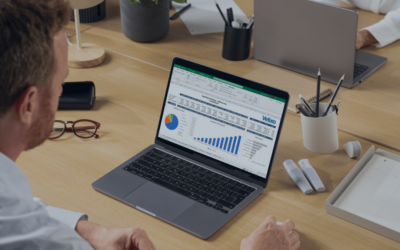If you operate a business in the manufacturing space, it is likely that you have worked with an MRP, or Material Requirement Planning, solution. MRPs provide an essential function in manufacturing, allowing users to optimize inventory planning, capacity planning, and scheduling. Given the capabilities of MRP in the space, some manufacturers may think it’s enough and bypass an ERP, or Enterprise Resource Planning, solution. For MRP vs. ERP, what are the differences? Are the differences such that a manufacturer should choose one or the other?
MRP vs. ERP – Scope
First off, it’s important to understand what each solution is. MRP, as discussed, addresses the intricacies of supply and demand in terms of inventory at a manufacturing company. An ERP solution is a much more all-encompassing solution. When designed for the manufacturing space, an ERP will have an MRP module included, besides a myriad of other features. An ERP, therefore, addresses the entire organization, not just the core manufacturing tasks.
That leads to one of the most significant differences between the two solutions. MRP is limited in scope. While it can be very helpful in managing inventory and supply, it does not touch on any other aspects of a manufacturing business. An ERP solution addresses multiple silos across a company, delivering control of and insight into everything from sales to customer service, besides its MRP capabilities.
MRP vs. ERP—Which is Right for Me?
Which is the right solution for your company? It may depend on scope. MRP may be enough for the smallest shops, or ones with a very static customer base and limited supply chain. For any small to medium-sized business in the manufacturing space, however, ERP may be the better option. ERP provides room to grow, for one. As you hire more employees and your user base expands, many ERP solutions grow right along with you at a cost you can easily manage.
ERP also is modular by design. This means you can add on (or even take away) modules as you need them or as the marketplace fluctuates. ERP is a unifier of multiple working parts, meaning that you can build your own version of a solution that works best for your needs. An MRP will probably have significant integration issues with any other solutions you are using, making it a far less useful tool for getting a holistic view of your company.
Manufacturing Features- Is ERP Enough?
One ‘con’ some might put in the column for ERP is that it is not specific enough to the manufacturing space. While that may have been the case in the past, today’s most advanced ERPs offer versions specifically for manufacturing. What you get is not only a holistic solution that can help your business grow as a whole, but also a manufacturing-specific solution with advantages customized for your space.
MRP vs ERP is a big decision for any manufacturing business. What have your own experiences been with this choice? Tell us about it in the comments. To explore how ERP can transform your manufacturing business and take you to the next level of performance, consult with an ERP specialist today and learn more about your options.



